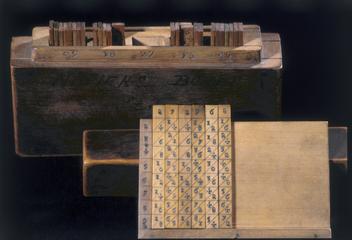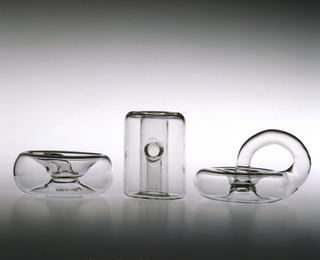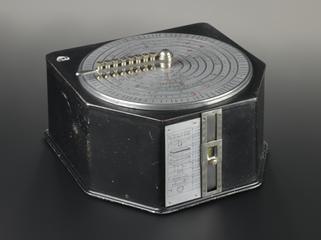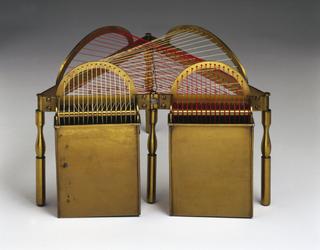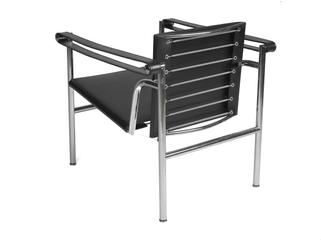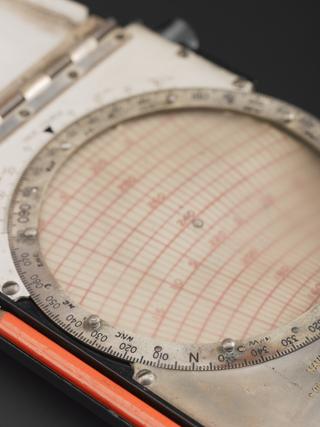






Set of Genaille's rods for division. French, c. 1885
These rods, a variation on Napier’s bones, were invented by Henri Genaille, a civil engineer, in 1885. They avoid even the need for addition of the components in a given area when performing multiplication, as the arrows guide the eyes to the next digit. Both Napier’s bones and Genaille’s rods have recently become popular as teaching aids.
